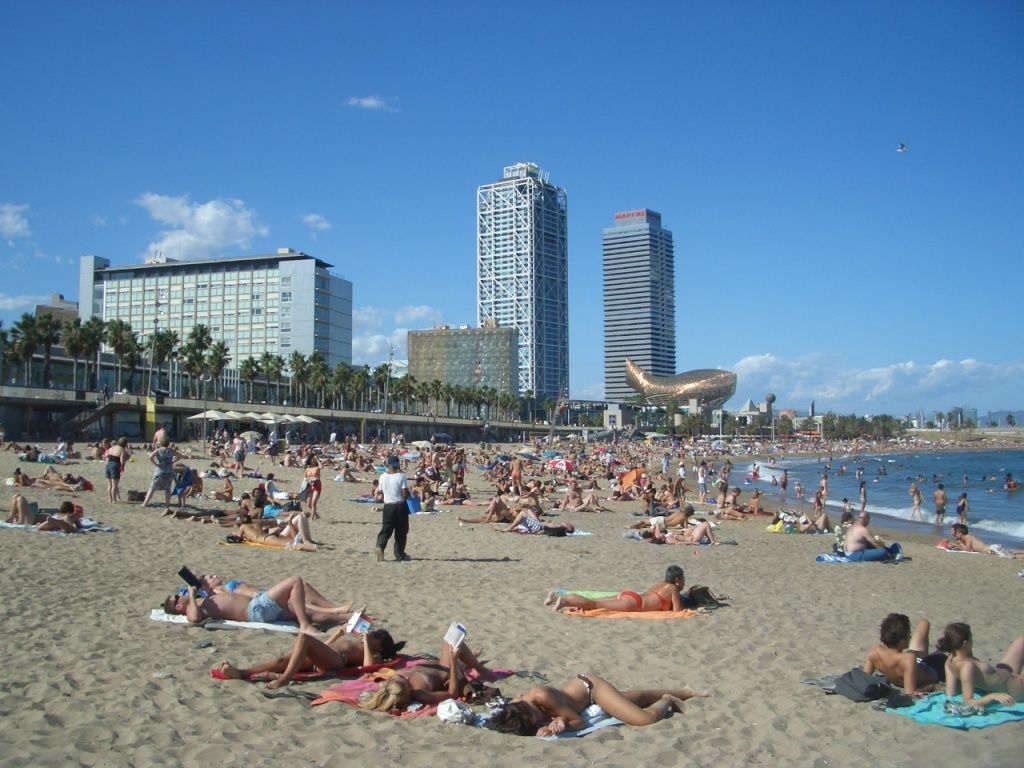
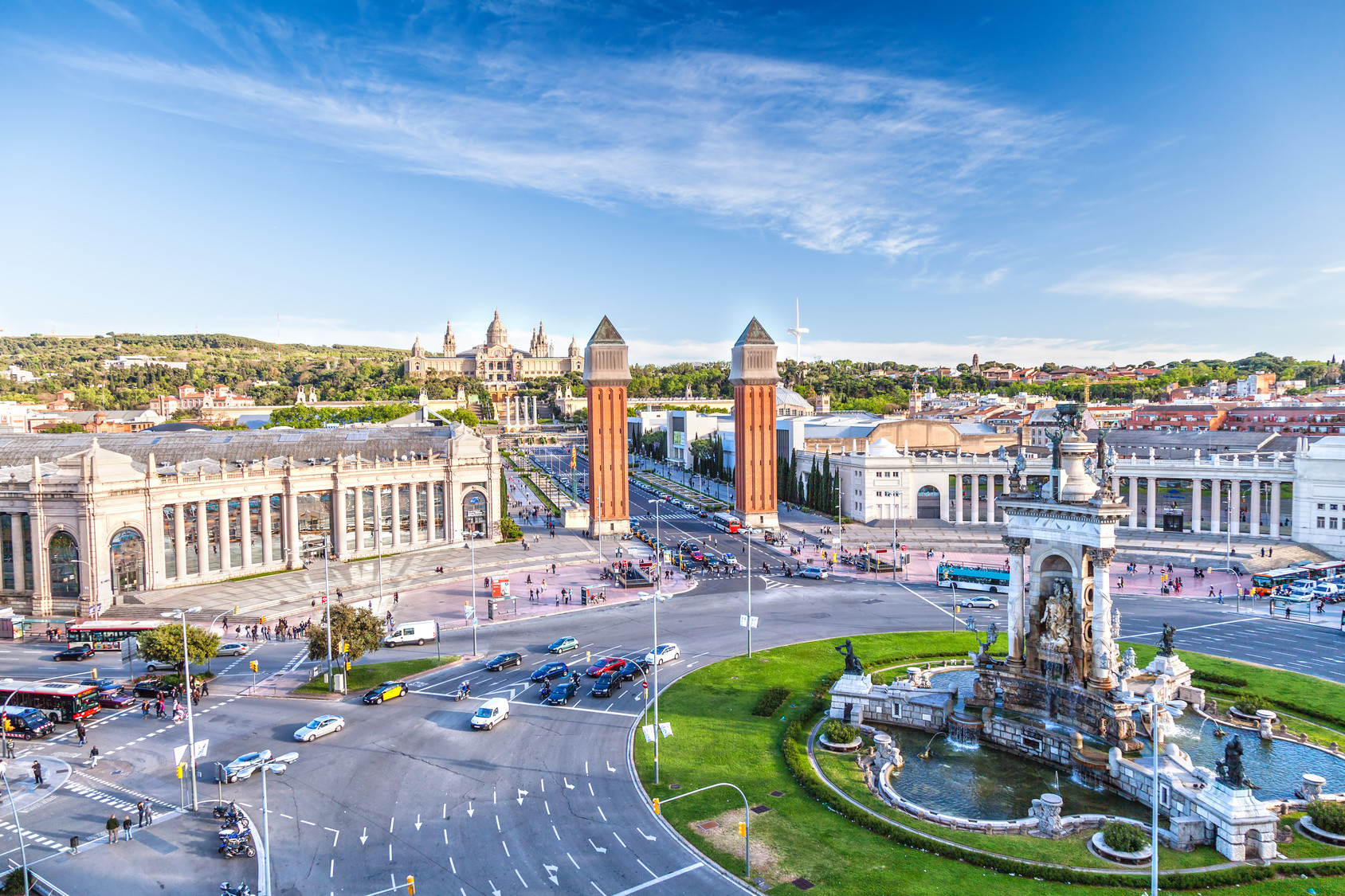
这座城市在展示通俗文化的同时,也没有忘记根深蒂固的传统。比如说,梅尔塞节还有在格拉西亚区、桑斯区或波布雷诺区举办的节庆活动,都向游客提供着不可多得的认识巴塞罗那的欢庆一面的机会。
以蔬果,新鲜水产香肠和橄榄油为基本原料,传统与现代相融合的烹饪手艺可以烹制出具有革新性又富有想象力的美食。于此,手工糖果和泡沫葡萄酒只能浅浅地触摸到巴塞罗那饮食文化的精髓。
巴塞罗那(加泰罗尼亚语:Barcelona,西班牙语:Barcelona)是西班牙加泰罗尼亚首府和巴塞罗那省省会,位于伊比利亚半岛的东北面,濒临地中海,全市人口约160万,都会区人口则约500万,为加泰罗尼亚第一大城。加泰罗尼亚的议会、行政机构、高等法院等政府中枢机构,以及最高首长均驻设于此。1999年,巴塞罗那由美国《国家地理杂志》评选为50个人生必游景点之一。
相传巴塞罗那由迦太基将领、汉尼拔的父亲哈米尔卡·巴卡所兴建,在其漫长的历史上还曾作为巴塞罗那伯爵领地和阿拉贡王国的都城。巴塞罗那因其众多历史建筑和文化景点成为众多旅游者的目的地,其中之代表是被列入联合国世界遗产的安东尼·高第和路易·多门内克·蒙塔内的建筑作品。安东尼·高第一直在巴塞罗那生活和工作,在这里有他很多的作品,其中最著名的包括桂尔宫、桂尔公园和圣家堂。巴塞罗那尚有两个知名的足球俱乐部:巴塞罗那和皇家西班牙人,其中巴塞罗那是世界最著名的足球俱乐部之一。
Barcelona (katalanisch [bəɾsəˈɫonə]; spanisch [baɾθeˈlona]; deutsch [baɐ̯səˈloːna] oder [baɐ̯t͡səˈloːna]) ist die Hauptstadt Kataloniens und nach Madrid die zweitgrößte Stadt Spaniens. Sie liegt am Mittelmeer, circa 120 Kilometer südlich der Pyrenäen und der Grenze zu Frankreich. Barcelona ist Verwaltungssitz der gleichnamigen Provinz und der Comarca Barcelonès.
Innerhalb des Stadtgebietes leben etwa 1,65 Millionen Menschen. Damit ist Barcelona die elftgrößte Gemeinde der Europäischen Union, nach Hamburg die zweitgrößte, die nicht die Hauptstadt eines Mitgliedstaates ist, und nach Paris die am zweitdichtesten besiedelte Millionenstadt Europas. Zusammen mit den in der Àrea Metropolitana de Barcelona zusammengeschlossenen Gemeinden der Agglomeration beträgt die Einwohnerzahl 3,16 Millionen. Im weiteren Einzugsbereich der Metropolregion (Àmbit Metropolità de Barcelona) leben insgesamt 4,86 Millionen Menschen. Mit jährlich mehr als sieben Millionen Touristen aus dem Ausland zählt Barcelona überdies zu den drei meistbesuchten Städten Europas.[2]
Barcelona (/ˌbɑːrsəˈloʊnə/ BAR-sə-LOH-nə, Catalan: [bəɾsəˈlonə], Spanish: [baɾθeˈlona]) is a city in Spain. It is the capital and largest city of Catalonia, as well as the second most populous municipality of Spain. With a population of 1.6 million within city limits,[5] its urban area extends to numerous neighbouring municipalities within the Province of Barcelona and is home to around 4.8 million people,[3][7] making it the sixth most populous urban area in the European Union after Paris, London, Madrid, the Ruhr area and Milan.[3] It is the largest metropolis on the Mediterranean Sea, located on the coast between the mouths of the rivers Llobregat and Besòs, and bounded to the west by the Serra de Collserola mountain range, the tallest peak of which is 512 metres (1,680 feet) high.
Founded as a Roman city, in the Middle Ages Barcelona became the capital of the County of Barcelona. After merging with the Kingdom of Aragon, Barcelona continued to be an important city in the Crown of Aragon as an economic and administrative centre of this Crown and the capital of the Principality of Catalonia. Barcelona has a rich cultural heritage and is today an important cultural centre and a major tourist destination. Particularly renowned are the architectural works of Antoni Gaudí and Lluís Domènech i Montaner, which have been designated UNESCO World Heritage Sites. The headquarters of the Union for the Mediterranean are located in Barcelona. The city is known for hosting the 1992 Summer Olympics as well as world-class conferences and expositions and also many international sport tournaments.
Barcelona is one of the world's leading tourist, economic, trade fair and cultural centres, and its influence in commerce, education, entertainment, media, fashion, science, and the arts all contribute to its status as one of the world's major global cities.[8][9] It is a major cultural and economic centre in southwestern Europe, 24th in the world (before Zürich, after Frankfurt)[10] and a financial centre. In 2008 it was the fourth most economically powerful city by GDP in the European Union and 35th in the world with GDP amounting to €177 billion.[11] In 2012 Barcelona had a GDP of $170 billion; and it was leading Spain in employment rate in that moment.[12]
In 2009 the city was ranked Europe's third and one of the world's most successful as a city brand.[13] In the same year the city was ranked Europe's fourth best city for business and fastest improving European city, with growth improved by 17% per year,[14] and the city has been experiencing strong and renewed growth for the past three years. Since 2011 Barcelona has been a leading smart city in Europe.[15] Barcelona is a transport hub, with the Port of Barcelona being one of Europe's principal seaports and busiest European passenger port,[16] an international airport, Barcelona–El Prat Airport, which handles over 40 million passengers per year,[17] an extensive motorway network, and a high-speed rail line with a link to France and the rest of Europe.[18]
Barcelone (Barcelona en catalan, prononcé /bəɾsəˈlonə/, et en espagnol, prononcé /baɾθeˈlona/) est la capitale administrative et économique de la Catalogne, de la province de Barcelone, de la comarque du Barcelonès ainsi que de son aire et de sa région métropolitaines, en Espagne.
Barcelone est la deuxième ville d'Espagne en termes de population, d'économie et d'activités, la onzième ville la plus peuplée de l'Union européenne et la sixième en incluant sa banlieue4: 4,84 millions de personnes vivent dans l'agglomération barcelonaise5. La majeure partie des municipalités adjacentes sont en outre rassemblées dans l'Aire métropolitaine de Barcelone.
Située sur le littoral méditerranéen, elle est traversée par les fleuves Llobregat et Besòs et bordée à l'ouest par la serra de Collserola qui culmine à 512 mètres (sommet : Tibidabo). Elle est considérée comme ville mondiale en raison de son importance dans les domaines de la finance, du commerce international, de l'édition, des arts, du divertissement et des médias. Barcelone est donc un centre économique majeur qui jouit de surcroît d'un des principaux ports méditerranéens et du deuxième aéroport espagnol derrière celui de Madrid-Barajas. Elle est aussi la ville qui possède le plus grand parc métropolitain du monde, le parc Collserola, devant Central Park à New York. Ayant été fondée par les Romains, la ville devint la capitale des comtes de Barcelone puis l'une des villes majeures de la Couronne d'Aragon et, après, la capitale de la principauté de Catalogne. Redessinée plusieurs fois pendant son histoire, elle est une destination touristique majeure et jouit d'un patrimoine culturel unique. Le palais Güell (en 1984), la Casa Milà, le parc Güell, le palais de la musique catalane et l'hôpital de Sant Pau figurent d'ailleurs sur la liste du patrimoine mondial de l'UNESCO. En outre, la ville est également connue pour avoir accueilli les Jeux olympiques en 1992 et, plus récemment, le siège de l'union pour la Méditerranée. Chaque année, les visiteurs arrivent par milliers et le nombre augmente de plus en plus. En 2015, un total de 8 988 038 touristes ont visité Barcelone6.
Barcellona (AFI: /barʧelˈlona/[1]; in catalano e spagnolo Barcelona) è una città di 1.620.809 abitanti (area metropolitana istituzionale: 3.239.337 abitanti) della Spagna, capoluogo della Catalogna, una comunità autonoma della parte nord-orientale dello Stato, oltre che dell'omonima provincia e della comarca del Barcelonès. Soprannominata Ciutat Comtal o Ciudad Condal (Città dei Conti), è la seconda città della Spagna per numero di abitanti dopo la capitale Madrid.
Nel 1992 fu sede dei Giochi Olimpici estivi. Nel 2004 vi si è tenuto per la prima volta assoluta il Forum Universale delle Culture, la città ha ospitato l'Esposizione internazionale del 1888 e quella del 1929, ed è la sede fissa del Mobile World Congress e dell'Unione per il Mediterraneo. Forte del turismo, del porto e della vicinanza alla Francia (160 km da Le Perthus), la città è il secondo maggior centro industriale e finanziario della Spagna dopo Madrid, nonché il maggior porto commerciale e turistico e uno dei maggiori d'Europa.
Barcelona es una ciudad española, capital de la comunidad autónoma de Cataluña, de la comarca del Barcelonés y de la provincia homónima.
Con una población de 1 620 809 habitantes en 2017,6 es la segunda ciudad más poblada de España después de Madrid, y la undécima de la Unión Europea. El área metropolitana de Barcelona, incluida en el ámbito metropolitano de Barcelona, cuenta con 5 029 181 habitantes (2011), siendo así la sexta ciudad de mayor población de la Unión Europea.78
Se ubica a orillas del mar Mediterráneo, a unos 120 km al sur de la cadena montañosa de los Pirineos y de la frontera con Francia, en un pequeño llano litoral limitado por el mar al este, la sierra de Collserola al oeste, el río Llobregat al sur y el río Besós al norte. Por haber sido capital del condado de Barcelona, se suele aludir a ella con la denominación antonomástica de Ciudad Condal.
La historia de Barcelona se extiende a lo largo de 4000 años, desde finales del Neolítico, con los primeros restos hallados en el territorio de la ciudad, hasta la actualidad. El sustrato de sus habitantes aúna a los pueblos íberos, romanos, judíos, visigodos, musulmanes y cristianos. Como capital de Cataluña y segunda ciudad en importancia de España, la Ciudad Condal ha forjado su relevancia con el tiempo, desde ser una pequeña colonia romana hasta convertirse en una ciudad valorada internacionalmente por aspectos como su economía, su patrimonio artístico, su cultura, su deporte y su vida social.
Barcelona ha sido escenario de diversos acontecimientos internacionales que han contribuido a consolidarla, desarrollarla y darle proyección mundial. Los más relevantes han sido la Exposición Universal de 1888, la Exposición Internacional de 1929, los Juegos Olímpicos de 1992 y el Fórum Universal de las Culturas 2004. Es también sede del secretariado de la Unión para el Mediterráneo.9
En la actualidad, Barcelona está reconocida como una ciudad global por su importancia cultural, financiera, comercial y turística. Posee uno de los puertos más importantes del Mediterráneo y es también un importante punto de comunicaciones entre España y Francia, debido a las conexiones por autopista y alta velocidad ferroviaria. El aeropuerto de Barcelona-El Prat, situado a 15 km del centro de la ciudad, fue utilizado por más de 47,2 millones de pasajeros en 2017.10

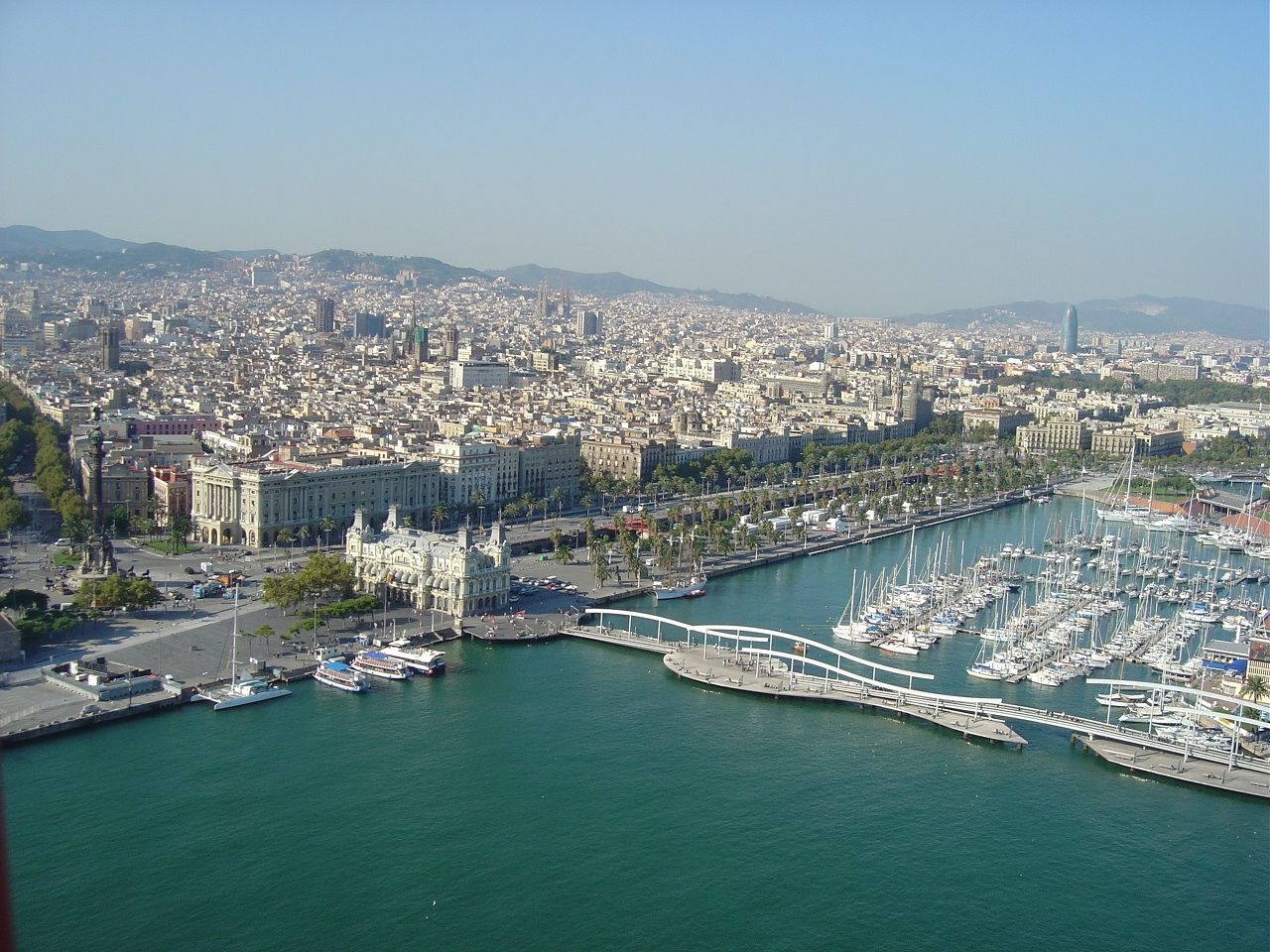

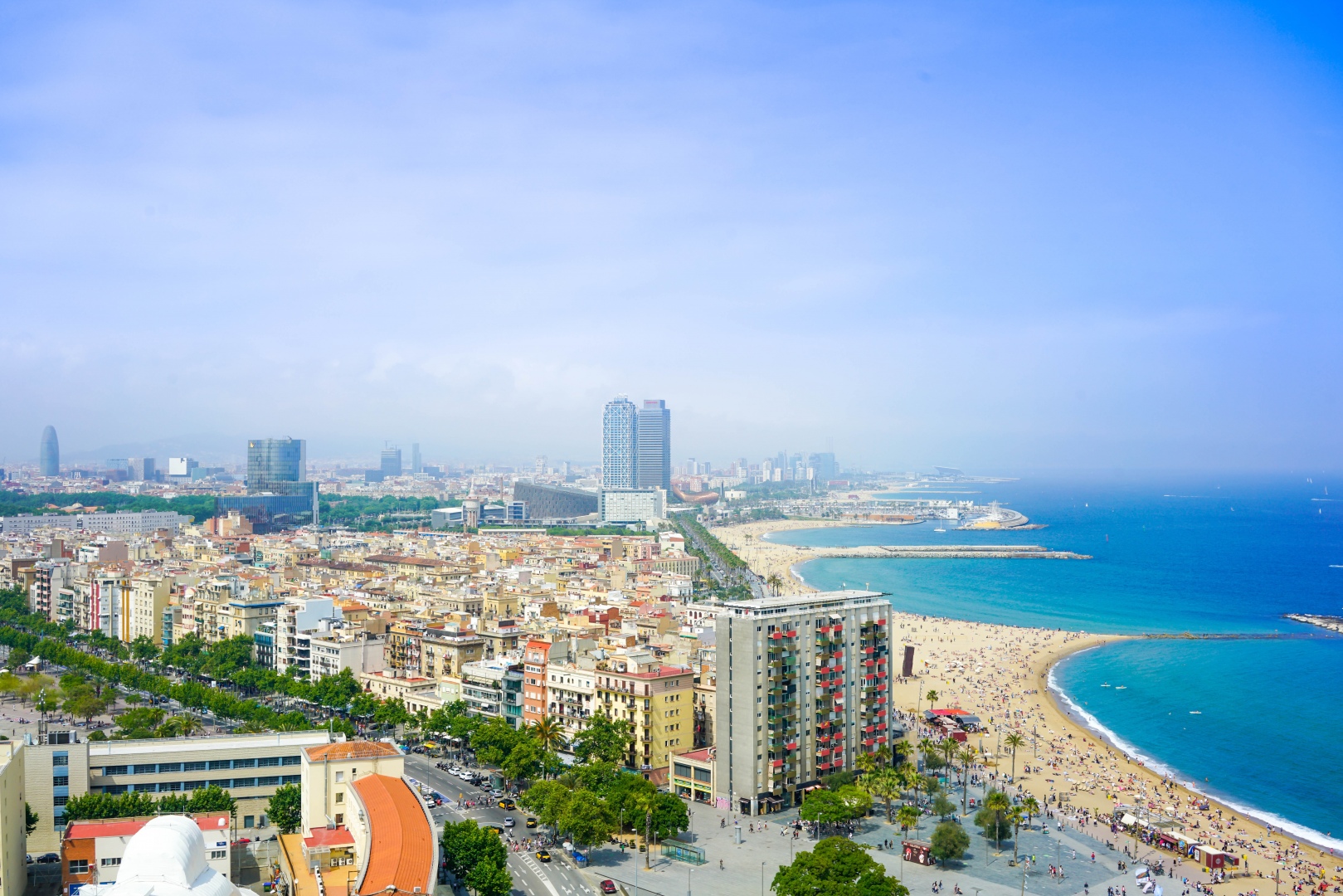
 在 近 5 年来,城市积极的不断扩展其文 化活动,每年都致力于一个主题,2000 年的 主题是音乐,2001 年是艺术、博物馆和国际 会议年,2002 年是高迪年(Any Gaudí),2003 年是设计之年(Any del Disseny),到 2004 年全球文化论坛 (Fòrum Universal de les cultures) 以及 2005 年 3 月到 2006 年 3 月“营养、烹饪和美食年”(Any de l’Alimentació, la Cuina i la Gastronomia) 的举办,城市的文化氛围达到高潮。 在刚刚过去的 2003 设计年里,通过各种展览、节日庆祝,举办街头艺术竞赛和专题会 议,为孩子们设立工作室等各种活动,将设计和创新的理念溶入到公众的思想中。 热门旅游胜地 巴塞罗那是欧洲著名的旅游胜地,素有“伊比利亚半岛明珠”之称,每年吸引着几百万 的世界各地游客。这里属地中海气候,四季如春,温和宜人。冬季几个月雨量大,很少下雪, 气温很少降至零度以下。在过去的 3 年中,除了巴塞罗那传统的游客来源商务游客外,度 假游客比例不断上涨,已经占到巴塞罗那到访者的一半。 巴塞罗那是一座幽雅的城市,全城处在两座小山之间的一块狭长平原地带,市区三面为 丘陵围绕,一面是海港,地中海海岸像“V”字型拥抱着巴塞罗那城。这里同欧洲各地交通 便利,是理想的短期旅游胜地。极具魅力的巴塞罗那海港,以它绝佳的地理位置和齐全的装 备设施,成为各游轮公司钟爱的停靠之地。在 2002 年,巴塞罗那港共迎接了 633 艘游轮,84.3 万游客,比 2001 年增长了 28%。游轮的终点站直接和市中心与购物带相连,游客可以很快在市中心的各名胜古迹游览或是在欧洲最大的 5 公里长的购物带购物 (Shopping Line)。
在 近 5 年来,城市积极的不断扩展其文 化活动,每年都致力于一个主题,2000 年的 主题是音乐,2001 年是艺术、博物馆和国际 会议年,2002 年是高迪年(Any Gaudí),2003 年是设计之年(Any del Disseny),到 2004 年全球文化论坛 (Fòrum Universal de les cultures) 以及 2005 年 3 月到 2006 年 3 月“营养、烹饪和美食年”(Any de l’Alimentació, la Cuina i la Gastronomia) 的举办,城市的文化氛围达到高潮。 在刚刚过去的 2003 设计年里,通过各种展览、节日庆祝,举办街头艺术竞赛和专题会 议,为孩子们设立工作室等各种活动,将设计和创新的理念溶入到公众的思想中。 热门旅游胜地 巴塞罗那是欧洲著名的旅游胜地,素有“伊比利亚半岛明珠”之称,每年吸引着几百万 的世界各地游客。这里属地中海气候,四季如春,温和宜人。冬季几个月雨量大,很少下雪, 气温很少降至零度以下。在过去的 3 年中,除了巴塞罗那传统的游客来源商务游客外,度 假游客比例不断上涨,已经占到巴塞罗那到访者的一半。 巴塞罗那是一座幽雅的城市,全城处在两座小山之间的一块狭长平原地带,市区三面为 丘陵围绕,一面是海港,地中海海岸像“V”字型拥抱着巴塞罗那城。这里同欧洲各地交通 便利,是理想的短期旅游胜地。极具魅力的巴塞罗那海港,以它绝佳的地理位置和齐全的装 备设施,成为各游轮公司钟爱的停靠之地。在 2002 年,巴塞罗那港共迎接了 633 艘游轮,84.3 万游客,比 2001 年增长了 28%。游轮的终点站直接和市中心与购物带相连,游客可以很快在市中心的各名胜古迹游览或是在欧洲最大的 5 公里长的购物带购物 (Shopping Line)。  巴塞罗那一方面保持有古香古色的老城区的风貌,另一方面又拥有现代建筑林立的新 建区。罗马时期遗留下的加泰罗尼亚绘画,不 知吸引了 多 少世人的 目 光。圣家 赎 罪 堂 (Sagrada Família) 和高迪的各座极具特色的 现代派建筑,已经成为了城市的标志,每年上 百万的游客专程前来一度它的风采。美丽的海港区碧波荡漾,海鸟翱翔,夏季来度假的人们挤满了海滩。在城市的制高点蒙杰伊克山坡(Montjuïc) 或附近的提比达波山地 (Tibidabo), 可以眺望到巴塞罗那令人心旷神怡的全景。 欧洲生活质量一流的城市 沐浴在巴塞罗那温暖的阳光下,人们的生活感到如此惬意。城市拥有全世界令人称羡的 文化遗产和历史古迹,从古老的哥特区到年轻的扩建区,从罗马遗迹到现代建筑,到处都充 满了迷人而有趣的景象。品质卓越的剧院、音乐厅和博物馆,热闹丰富的各种节日和文化活 动,将一年四季装点得五彩缤纷。
巴塞罗那一方面保持有古香古色的老城区的风貌,另一方面又拥有现代建筑林立的新 建区。罗马时期遗留下的加泰罗尼亚绘画,不 知吸引了 多 少世人的 目 光。圣家 赎 罪 堂 (Sagrada Família) 和高迪的各座极具特色的 现代派建筑,已经成为了城市的标志,每年上 百万的游客专程前来一度它的风采。美丽的海港区碧波荡漾,海鸟翱翔,夏季来度假的人们挤满了海滩。在城市的制高点蒙杰伊克山坡(Montjuïc) 或附近的提比达波山地 (Tibidabo), 可以眺望到巴塞罗那令人心旷神怡的全景。 欧洲生活质量一流的城市 沐浴在巴塞罗那温暖的阳光下,人们的生活感到如此惬意。城市拥有全世界令人称羡的 文化遗产和历史古迹,从古老的哥特区到年轻的扩建区,从罗马遗迹到现代建筑,到处都充 满了迷人而有趣的景象。品质卓越的剧院、音乐厅和博物馆,热闹丰富的各种节日和文化活 动,将一年四季装点得五彩缤纷。  全 市的 160 多座花园,广阔的绿色区域,宽敞的散步 大道,是人们休闲散步、举家野营的好去处。最高水平的 运动场馆和设施,3000 多个体育中心和 1000 多个体育俱 乐部,各种露天活动场所,任你驰骋在运动天地。5 公里 长的公共海滩,更让你尽享海风细沙,各种水上活动的乐 趣。24 所外国人开办的提供中等教育的学校和拥有 17 万学生登记的好几所公立大学,外加开放式学校和各种享有国际声誉的商业学校,为人们提供了良好的教育环境。巴塞罗那的失业率低于西班牙和其他欧盟经济区的 整体平均水平,不同 产业的多种就业职位提供给就业者在各个领域获得经验和培训的机会。高质量的医疗服务机 构,包括拥有国际水平的医院、1200 个专门针对老年人、残疾人和需要关注的特殊群体设 置的服务中心,以及 50 个提供了 3500 名医疗保健专业人员和 1.1 万张床位的非医院性质 的保健中心。各种规模、条件、价位的住宅区和餐厅为居民提供了吃住无忧的生存环境。这 里还拥有欧洲最长的购物带,40 个地方性市场,琳琅满目、活色生香的货品令人眼花缭 乱…… 一切的一切,巴塞罗那已为你安排。 西班牙文艺复兴时期的大作家塞万提斯(Cervantes)早在 16 世纪就曾这样评价过:“独具魅力的巴塞罗那,彬彬有礼的礼仪之城,这里是西班牙的骄傲,是居民的乐土,是外国人的聚集地,是穷人的医院,是弱者的依赖,是强者的家园,是友谊的桥梁……”
全 市的 160 多座花园,广阔的绿色区域,宽敞的散步 大道,是人们休闲散步、举家野营的好去处。最高水平的 运动场馆和设施,3000 多个体育中心和 1000 多个体育俱 乐部,各种露天活动场所,任你驰骋在运动天地。5 公里 长的公共海滩,更让你尽享海风细沙,各种水上活动的乐 趣。24 所外国人开办的提供中等教育的学校和拥有 17 万学生登记的好几所公立大学,外加开放式学校和各种享有国际声誉的商业学校,为人们提供了良好的教育环境。巴塞罗那的失业率低于西班牙和其他欧盟经济区的 整体平均水平,不同 产业的多种就业职位提供给就业者在各个领域获得经验和培训的机会。高质量的医疗服务机 构,包括拥有国际水平的医院、1200 个专门针对老年人、残疾人和需要关注的特殊群体设 置的服务中心,以及 50 个提供了 3500 名医疗保健专业人员和 1.1 万张床位的非医院性质 的保健中心。各种规模、条件、价位的住宅区和餐厅为居民提供了吃住无忧的生存环境。这 里还拥有欧洲最长的购物带,40 个地方性市场,琳琅满目、活色生香的货品令人眼花缭 乱…… 一切的一切,巴塞罗那已为你安排。 西班牙文艺复兴时期的大作家塞万提斯(Cervantes)早在 16 世纪就曾这样评价过:“独具魅力的巴塞罗那,彬彬有礼的礼仪之城,这里是西班牙的骄傲,是居民的乐土,是外国人的聚集地,是穷人的医院,是弱者的依赖,是强者的家园,是友谊的桥梁……”
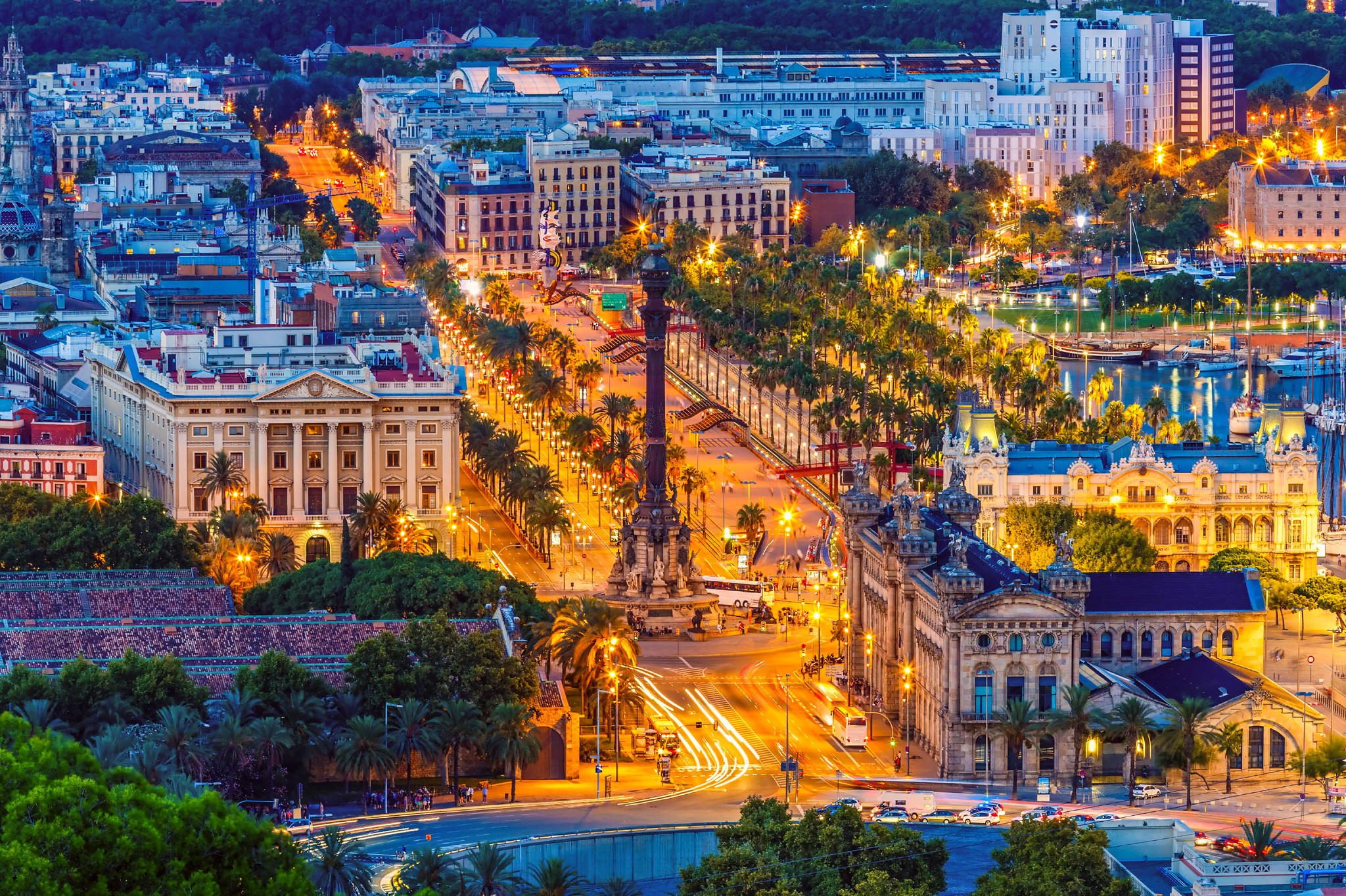
 老 城区是巴塞罗那历史最悠久,最受游客欢迎的 区域,也是整个巴塞罗那的心脏。它又分为哥特区(Barri Gòtic)、海岸区(La Ribera)和拉巴尔(El Raval) 区。哥特区是老城区的核心区,原本是一座古罗马要 塞村,因建有许多哥特式古建筑而得名。在老城区之 中、原第一道城墙之外的是海岸区,它以来埃塔(Via Laietana)大街为界与哥特区相邻,也是起源于中世纪 的城区。拉巴尔区是以前的红灯区,现在这里的街道 两边排列着艺术家的艺廊、服装店、酒吧和唱片店。有趣的是,很多人把这里称为 “Barrio Chino”, 中文解释是“中国区”或“唐人街”。实际上,这里根本没有几个中国人,也看不 到其他国外大城市“唐人街”的热闹景象,倒是住着不少来自非洲国家的移民。 老城区内著名的兰布拉大街(La Rambla)最北端通向扩建区(L'Eixample),它是 19 世纪60 年代城市扩建工程的产物。这里的街道呈整齐的方格状布局,交叉路口呈钻石形,区内 聚集了许多高迪建筑。兰布拉大街的南端是海港地区的和平门广场,广场中央矗立着哥伦布 了望塔(Mirador de Colom),登上塔顶端的了望台,可以观赏到港口的美景和西部城市的“绿 肺”所在地蒙杰伊克区(Montjuïc)。 巴塞罗那所有的景点几乎都集中在老城区和扩建区,北部的格拉西亚区(Gràcia)位于城市的郊区,这里曾是革命的温床,现在是人们夜生活的好去处。城市的其他所辖卫星城多 位于海岸东部和内陆东部和西部,还有待于进一步的开发。
老 城区是巴塞罗那历史最悠久,最受游客欢迎的 区域,也是整个巴塞罗那的心脏。它又分为哥特区(Barri Gòtic)、海岸区(La Ribera)和拉巴尔(El Raval) 区。哥特区是老城区的核心区,原本是一座古罗马要 塞村,因建有许多哥特式古建筑而得名。在老城区之 中、原第一道城墙之外的是海岸区,它以来埃塔(Via Laietana)大街为界与哥特区相邻,也是起源于中世纪 的城区。拉巴尔区是以前的红灯区,现在这里的街道 两边排列着艺术家的艺廊、服装店、酒吧和唱片店。有趣的是,很多人把这里称为 “Barrio Chino”, 中文解释是“中国区”或“唐人街”。实际上,这里根本没有几个中国人,也看不 到其他国外大城市“唐人街”的热闹景象,倒是住着不少来自非洲国家的移民。 老城区内著名的兰布拉大街(La Rambla)最北端通向扩建区(L'Eixample),它是 19 世纪60 年代城市扩建工程的产物。这里的街道呈整齐的方格状布局,交叉路口呈钻石形,区内 聚集了许多高迪建筑。兰布拉大街的南端是海港地区的和平门广场,广场中央矗立着哥伦布 了望塔(Mirador de Colom),登上塔顶端的了望台,可以观赏到港口的美景和西部城市的“绿 肺”所在地蒙杰伊克区(Montjuïc)。 巴塞罗那所有的景点几乎都集中在老城区和扩建区,北部的格拉西亚区(Gràcia)位于城市的郊区,这里曾是革命的温床,现在是人们夜生活的好去处。城市的其他所辖卫星城多 位于海岸东部和内陆东部和西部,还有待于进一步的开发。




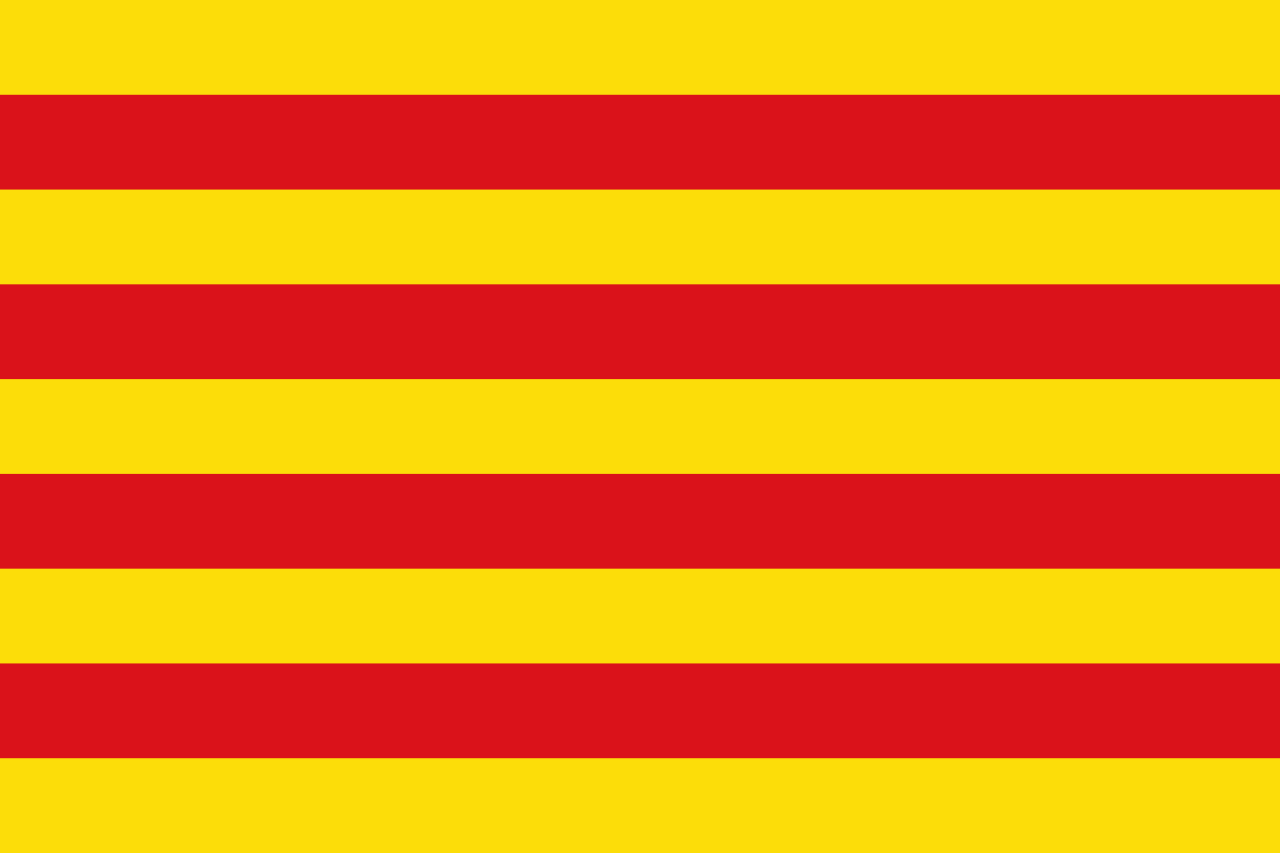 Cataluña
Cataluña
 History
History
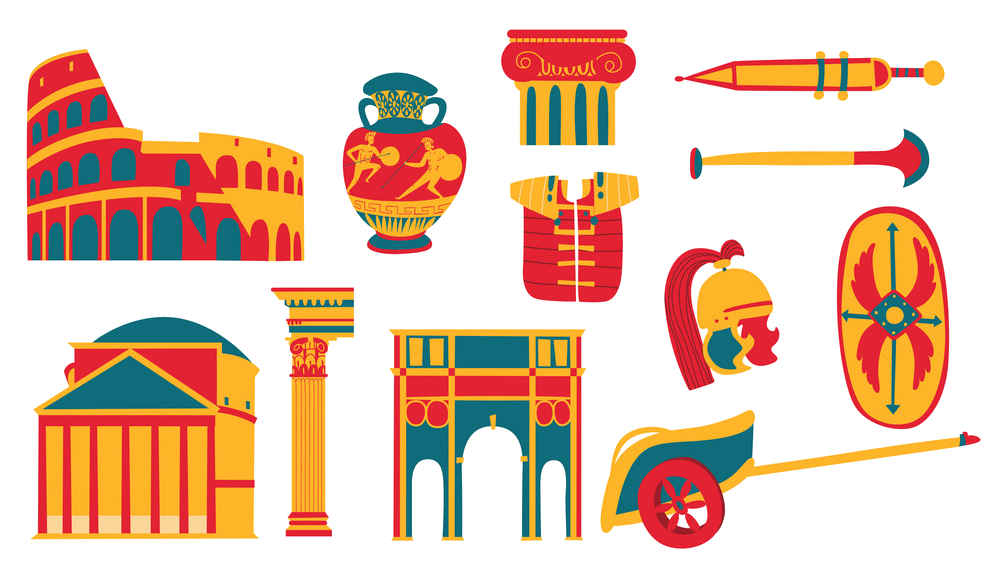 Cities founded by the Romans
Cities founded by the Romans
 World Heritage
World Heritage



